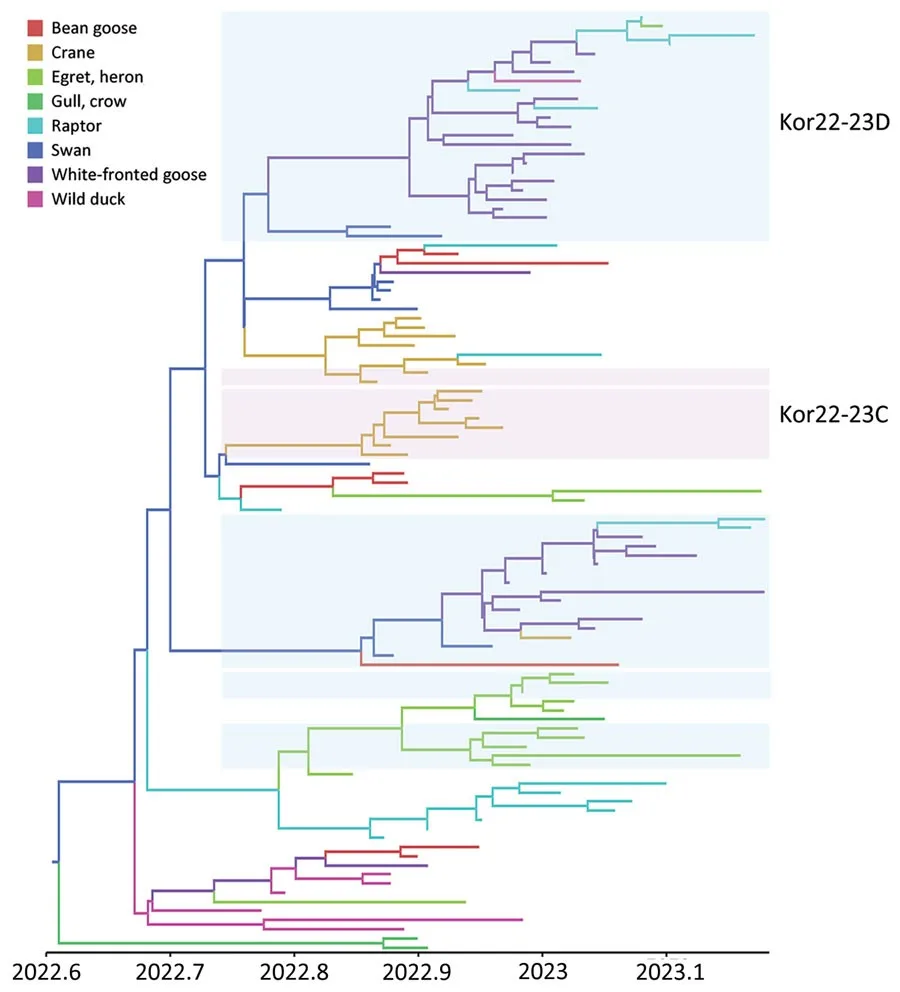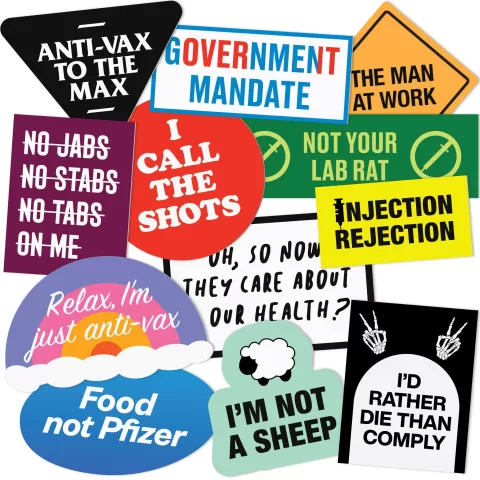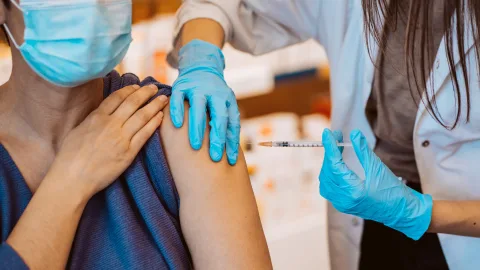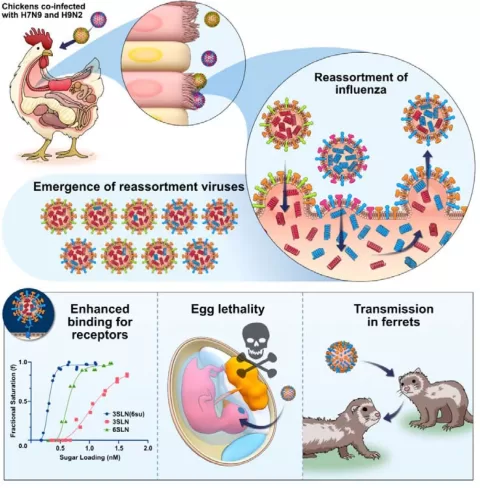H5N1 clade 2.3.4.4b is a highly pathogenic avian influenza strain that has raised significant concerns in public health due to its recent outbreaks impacting dairy cattle and poultry across the United States. Since early 2024, more than 1,000 herds have been affected, with 70 reported human infections primarily arising from occupational exposure. This alarming trend has spurred research into the efficacy of existing seasonal influenza vaccines against this particular clade of the H5N1 virus. Understanding the cross-protective capabilities of seasonal vaccines may offer crucial insights into mitigating the risk of zoonotic infections in humans. Therefore, exploring how H5N1 vaccine efficacy compares with conventional human vaccines is essential for future preparedness against avian influenza challenges.
The emergence of H5N1 clade 2.3.4.4b highlights the ongoing threat of avian influenza, a viral infection that poses risks not only to birds but also to human populations. This strain’s rapid spread among livestock and its detection in humans emphasize the importance of investigating vaccination strategies to combat zoonotic influenza strains. Current research focuses on the potential of seasonal influenza vaccines to provide some level of immunity against such pathogens. Exploring alternative protective measures could contribute to our understanding of how to effectively manage and reduce the impact of bird flu on public health. By assessing the interactions between vaccination and emerging avian viruses, researchers aim to enhance preventive strategies against seasonal influenza and related strains.
Understanding H5N1 Clade 2.3.4.4b Infections
H5N1 clade 2.3.4.4b is a highly pathogenic avian influenza virus that has raised significant concern within the veterinary and public health communities. Since the beginning of 2024, it has been responsible for a spike in infections among dairy cattle and poultry flocks in the United States, with over a thousand herds affected. The zoonotic nature of this strain presents a direct threat to humans, as evidenced by the 70 reported human cases attributed mainly to occupational exposure. This showcases the urgent need for surveillance and effective management practices in agriculture to mitigate the risks associated with this virus.
The clade has demonstrated an alarming propensity for spread, reinforcing the necessity for poultry farmers and veterinarians to remain vigilant. The potential for H5N1 to jump from animals to humans underscores the importance of understanding its transmission dynamics. As not only a risk to animal health but also a public health concern, the interactions between H5N1 and other seasonal influenza strains warrant extensive research, particularly in identifying effective prevention strategies that could involve both veterinary and human health measures.
Role of Seasonal Influenza Vaccines in Providing Protection
Recent studies indicate that seasonal influenza vaccines may offer a degree of cross-protective immunity against specific strains of avian influenza. This research particularly highlights the efficacy of vaccines against H5N1 clade 2.3.4.4b virus, suggesting that while these vaccines primarily target seasonal strains, they can also elicit a faint but noteworthy immunological response to more zoonotic strains. The implications of these findings are significant, as they suggest that human vaccinations could play a role in lessening the severity of potential H5N1 infections in cases of zoonotic transmission.
In trials, the live attenuated influenza vaccine (LAIV) exhibited particularly robust protection compared to other forms like the recombinant hemagglutinin vaccine (RIV) and the inactivated trivalent vaccine (IIV3). The ability of LAIV to reduce viral shedding and disease severity in model organisms, such as ferrets, demonstrates the urgency of considering seasonal vaccines in protective health strategies against H5N1. The presence of cross-reactive antibodies indicates a potential pathway through which seasonal vaccines might bolster immunity against unexpected infections.
Assessing Vaccine Efficacy Against H5N1
The assessment of vaccine efficacy against H5N1 clade 2.3.4.4b introduces a complex layer to the discussion surrounding seasonal influenza vaccines. While these vaccines provide valuable baseline protection against known seasonal strains, their ability to protect against emerging zoonotic threats is less certain. Research indicates that, despite being designed to combat seasonal influenza, these vaccines can elicit immune responses against H5N1, albeit to a lesser degree than would be ideal. This highlights an essential area for future research: improving cross-reactivity in vaccine formulations to enhance protection against diverse influenza A virus strains.
Clinical observations from ferret studies suggest that the immune response generated through vaccination is often limited, with varying degrees of efficacy observed across different vaccine types. Understanding the nuances of this efficacy not only informs immunization strategies but also lays the groundwork for future vaccine development tailored to encompass a broader range of IAV strains, including those with zoonotic potential. Enhancing vaccine cross-protection may ultimately provide a crucial barrier against H5N1 outbreaks and prevent potential human infections.
Implications of Zoonotic Infections on Public Health
Zoonotic infections pose a significant public health challenge, as seen through the lens of avian influenza, specifically H5N1 clade 2.3.4.4b. The interconnectedness of animal health, human health, and environmental factors underscores the importance of a One Health approach that integrates multidisciplinary practices. The rise in human cases of avian influenza emphasizes the critical need for effective monitoring, prompt response strategies, and public awareness about the risks of zoonotic diseases. The implications of these infections extend beyond individual cases, affecting community health and agricultural practices alike.
Public health strategies must adapt to the growing threat of zoonotic infections, integrating veterinary insights with human health initiatives. As vaccination efforts expand, it becomes imperative to recognize the potential for seasonal influenza vaccines to provide a partial buffer against emerging strains like H5N1. By fostering collaboration between sectors, we can enhance our preparedness for zoonotic threats, ultimately striving for a healthier coexistence between humans and animals while minimizing the risk of infectious disease transmission.
Future Directions for H5N1 Vaccine Research
The future of H5N1 vaccine research must address the urgent need for tailored vaccines that can effectively induce immunity against various strains, particularly those with zoonotic potential. Current seasonal influenza vaccines provide a starting point for understanding how cross-reactive immunities can be harnessed more effectively. Research initiatives should focus on enhancing the immunogenicity of these vaccines, exploring novel vaccine platforms like mRNA and viral vectors that may offer broader protection against avian influenza strains.
Furthermore, collaboration between veterinary and human health researchers could yield significant advancements in vaccine development. As we observe the movement of avian influenza viruses across species, continual surveillance and rapid vaccine adaptation will be critical. Future trials should not only seek to enhance efficacy but also investigate the long-term safety and immune memory responses generated from seasonal influenza vaccines, ensuring preparedness for any potential outbreak of H5N1 clade 2.3.4.4b or other emerging strains.
Strategies for Prevention of H5N1 Transmission
Preventing the transmission of H5N1 requires a multifaceted approach involving biosecurity measures in poultry farming, public health education, and vaccination strategies. Farmers must implement stringent biosecurity protocols to minimize contact between domestic birds and wild waterfowl, the natural reservoirs of H5N1. Public health campaigns aimed at educating workers in the poultry industry about zoonotic risks and the importance of vaccination are vital in controlling outbreaks.
In addition, developing targeted vaccination campaigns that include seasonal influenza vaccines can potentially reduce the risk of zoonotic transfer. Ensuring that at-risk populations receive timely vaccinations, alongside robust monitoring of avian influenza outbreaks, will be essential for minimizing human exposure and infection rates. Preventive strategies should not be static; they must evolve based on emerging data regarding the behavior and mutation of H5N1 strains to effectively safeguard public health.
Challenges in Vaccination Against Zoonotic Viruses
One of the primary challenges in vaccinating against zoonotic viruses like H5N1 lies in the varying efficacy of available vaccines. While seasonal influenza vaccines can offer some cross-protection, the immune response varies significantly among individuals and between different vaccine types. This disparity poses a challenge for public health officials and researchers persistently striving to understand how best to optimize vaccine formulations to achieve desired immunity levels against diverse strains.
Another significant hurdle is the need for rapid vaccine adaptation in response to the continuously evolving landscape of avian influenza viruses. The mutation rates within the influenza virus family can outpace development timelines, necessitating a nimble and proactive approach to vaccine design. Ongoing research must prioritize the identification of effective circulating strains and incorporate those findings into vaccine development to stay ahead of potential outbreaks.
The Importance of Cross-Reactive Antibodies in Immunity
Recent studies underscore the significance of cross-reactive antibodies in achieving immunity against diverse strains of influenza A viruses, particularly avian influenza. These antibodies, generated in response to seasonal influenza vaccines, have shown potential in providing partial protection against H5N1 clade 2.3.4.4b infections. Understanding the mechanisms behind their effectiveness can pave the way for improved vaccine formulations capable of inducing broader protective responses.
The presence of cross-reactive antibodies not only highlights the immune system’s adaptability but also opens up new avenues for targeting vaccine development. By exploring the specific antigens that elicit these responses, scientists can develop more effective immunization strategies that leverage existing vaccines’ designs while enhancing their protective capacity against emerging zoonotic strains.
Investigating Future Vaccination Strategies for Avian Flu
To combat the rising threat of avian influenza strains such as H5N1 clade 2.3.4.4b, there is an urgent need to explore innovative vaccination strategies. Traditional seasonal influenza vaccines may serve as a foundation, but researchers must investigate novel adjuvants and delivery methods that could enhance immunogenicity and protective efficacy. Next-generation vaccines hold the promise of generating robust immune responses that can tackle both seasonal and pandemic strains of influenza.
Moreover, collaborative global efforts in vaccine research are crucial, especially in developing regions where poultry farming is prevalent. By pooling resources and knowledge, countries can work towards creating vaccines that are not only effective in humans but also protect livestock populations, thereby addressing the zoonotic risk presented by avian influenza. This comprehensive approach to vaccination strategy is vital in ensuring a resilient public health system capable of mitigating future influenza threats.
Frequently Asked Questions
What is H5N1 clade 2.3.4.4b and why is it significant?
H5N1 clade 2.3.4.4b is a highly pathogenic avian influenza virus that has caused considerable outbreaks in poultry and livestock, with over 1,000 cattle herds and hundreds of poultry flocks affected in the U.S. since 2024. Its significance lies in its potential to infect humans and the implications for public health.
How do human seasonal influenza vaccines relate to H5N1 clade 2.3.4.4b infections?
Recent studies indicate that human seasonal influenza vaccines, including live attenuated and recombinant types, may offer partial protection against H5N1 clade 2.3.4.4b infections, particularly in animal models like ferrets. This cross-reactivity suggests potential for seasonal vaccines in reducing disease severity and viral load.
Can seasonal influenza vaccines prevent human infections by H5N1 clade 2.3.4.4b?
While seasonal influenza vaccines do not fully prevent human infections of H5N1 clade 2.3.4.4b, they can provide partial cross-protection and reduce disease severity, as indicated by studies involving ferrets. The effectiveness in humans is still being assessed.
What are the symptoms of H5N1 clade 2.3.4.4b in humans?
Symptoms of H5N1 clade 2.3.4.4b in humans can include severe respiratory illness, pneumonia, and even death, primarily stemming from exposure in occupational settings. It is crucial for those in high-risk jobs to be aware of these potential symptoms.
What measures can be taken to protect against H5N1 clade 2.3.4.4b infections?
To protect against H5N1 clade 2.3.4.4b infections, individuals, particularly those in contact with birds or livestock, should consider vaccination with seasonal influenza vaccines, maintain good hygiene practices, and avoid direct contact with infected animals.
What is the vaccine efficacy of H5N1 vaccines compared to seasonal influenza vaccines?
H5N1 vaccine efficacy is generally higher for H5N1-specific vaccines compared to seasonal influenza vaccines, which offer more limited protection. However, recent findings suggest that seasonal vaccines may still provide some level of immunity against H5N1 clade 2.3.4.4b through cross-reactive antibodies.
Is H5N1 clade 2.3.4.4b considered a zoonotic infection?
Yes, H5N1 clade 2.3.4.4b is considered a zoonotic infection, as it can be transmitted from birds to humans, posing a risk to public health and necessitating monitoring and preventive measures.
What roles do cross-reactive antibodies play in H5N1 clade 2.3.4.4b immunity?
Cross-reactive antibodies generated by prior infections or vaccinations can enhance immunity against H5N1 clade 2.3.4.4b viruses, potentially reducing disease severity and viral shedding, although they may not provide comprehensive protection.
| Key Findings | Details |
|---|---|
| Infection Spread | H5N1 clade 2.3.4.4b viruses have infected over 1,000 dairy cattle herds and hundreds of poultry flocks in the U.S. since 2024. |
| Human Cases | Seventy human infections were reported, primarily due to occupational exposure. |
| Vaccine Effectiveness | The immune response from seasonal vaccines varies; LAIV showed the best results against H5N1. |
| Types of Vaccines Tested | Three vaccines were evaluated: IIV3, LAIV, and RIV. |
| Immunization Results | LAIV offered strong cross-protection with reduced symptoms in ferrets. IIV3 and RIV showed limited protection. |
| Study Implications | Seasonal vaccines may provide partial protection against H5N1 clade 2.3.4.4b, warranting further research for human applications. |
Summary
H5N1 clade 2.3.4.4b has emerged as a significant strain of avian influenza affecting livestock and raising concerns for human health. Recent studies indicate that while seasonal influenza vaccines may not offer robust immunity, they do provide partial protection against this virus, particularly the live attenuated influenza vaccine, which demonstrated the best efficacy. As a result, understanding the effectiveness of these vaccines could be pivotal for public health strategies and mitigating the impact of H5N1 infections.
The content provided on this blog (e.g., symptom descriptions, health tips, or general advice) is for informational purposes only and is not a substitute for professional medical advice, diagnosis, or treatment. Always seek the guidance of your physician or other qualified healthcare provider with any questions you may have regarding a medical condition. Never disregard professional medical advice or delay seeking it because of something you have read on this website. If you believe you may have a medical emergency, call your doctor or emergency services immediately. Reliance on any information provided by this blog is solely at your own risk.








